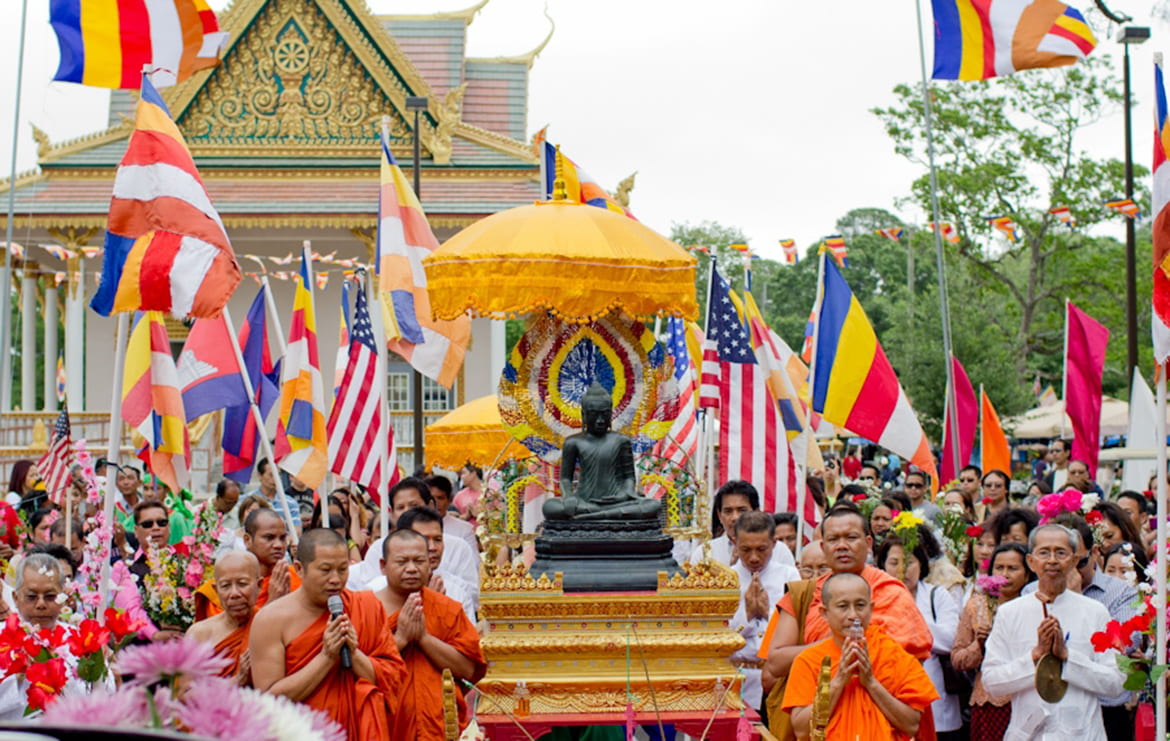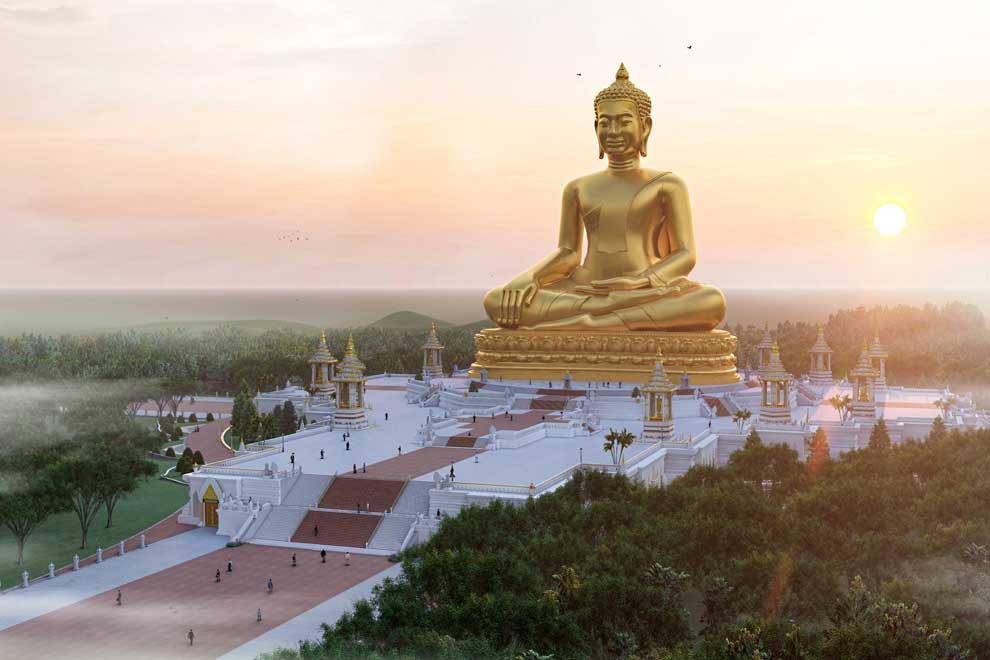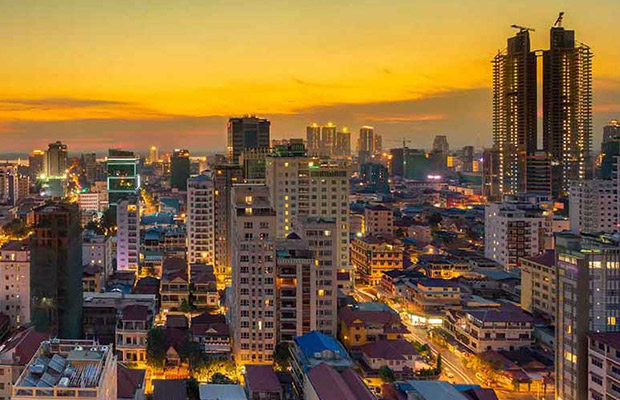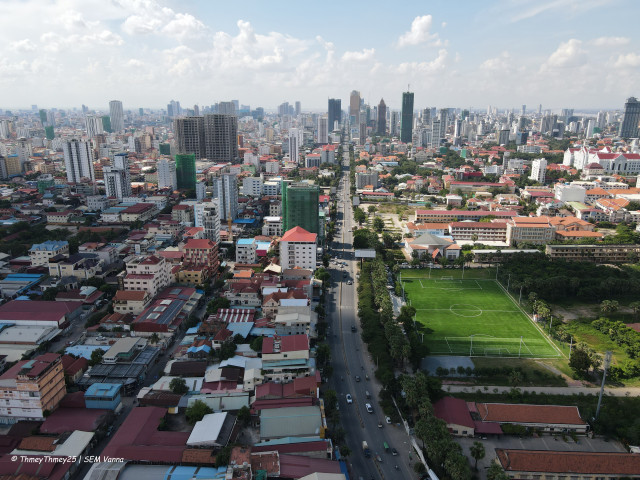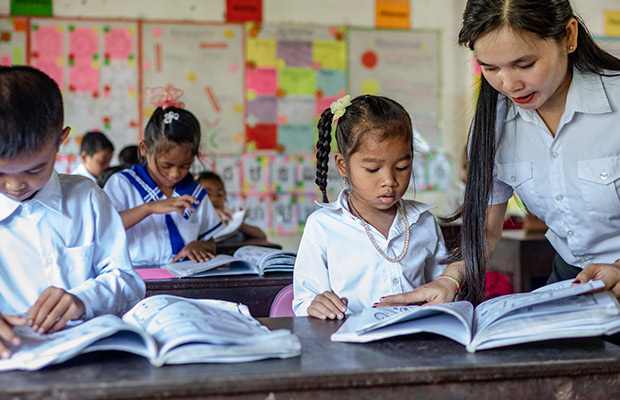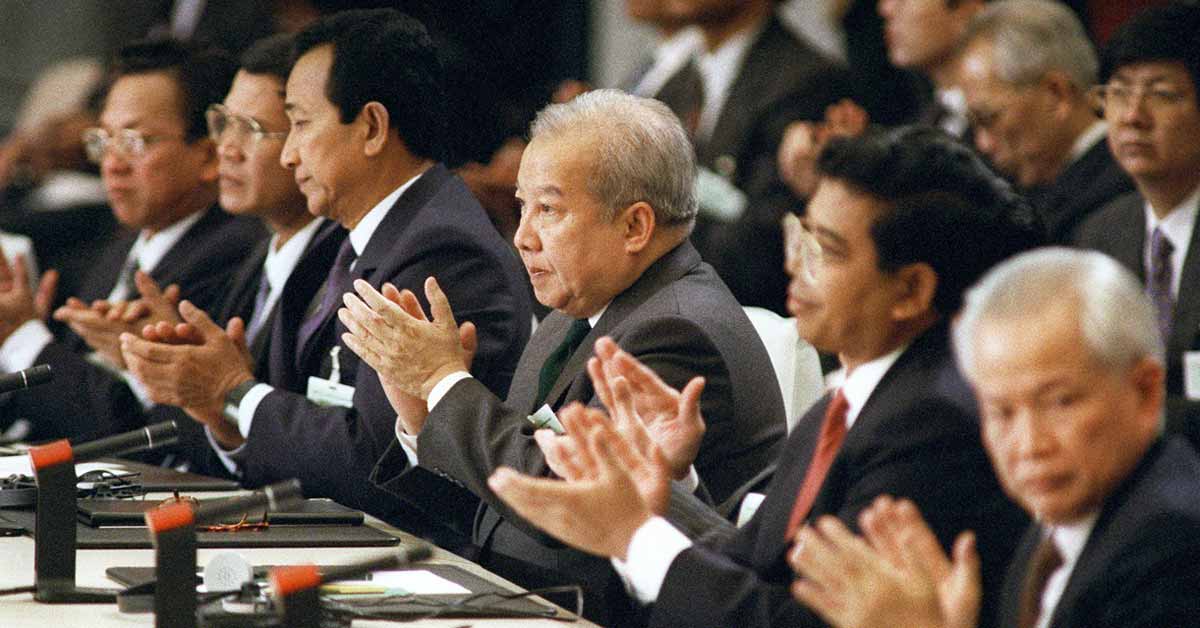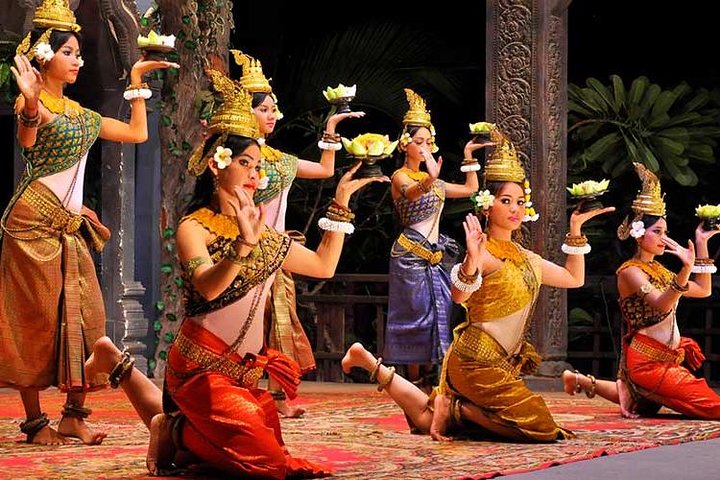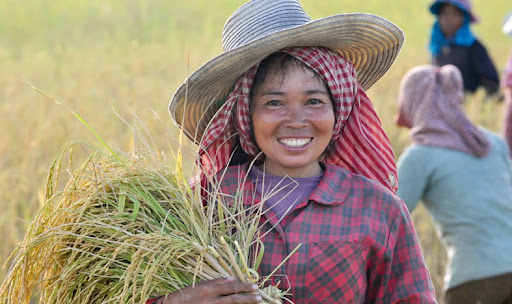- Historical Development: Cambodian religion has undergone a complex evolution shaped by centuries of cultural exchanges, dynastic changes, and external influences. The earliest religious practices in the region were animistic, centered around the worship of natural spirits and ancestral deities. The arrival of Indian traders and Brahmanical influences around the 1st century BCE introduced elements of Hinduism, including temple construction, deity worship, and ritualistic practices. Over time, Hinduism coexisted with indigenous animism, leading to the emergence of a syncretic religious tradition known as Khmer Hinduism.
The spread of Mahayana Buddhism from India to Southeast Asia in the early centuries CE laid the foundation for the eventual dominance of Buddhism in Cambodia. However, it was not until the reign of King Jayavarman VII in the 12th century that Buddhism became the state religion, supplanting Hinduism as the primary spiritual and cultural force in the Khmer Empire. Theravada Buddhism gained prominence in Cambodia following the decline of the Khmer Empire and the establishment of the Thai-speaking Ayutthaya Kingdom as a regional power in the 14th century.
- Theravada Buddhism in Cambodia: Theravada Buddhism, the “Doctrine of the Elders,” emphasizes the original teachings of the historical Buddha Siddhartha Gautama, as preserved in the Pali Canon. It emphasizes the Four Noble Truths (the nature of suffering, its cause, cessation, and the path to cessation) and the Noble Eightfold Path (right understanding, intention, speech, action, livelihood, effort, mindfulness, and concentration) as the means to achieve enlightenment (nirvana).
In Cambodia, Theravada Buddhism is practiced by the majority of the population, with monks and monastic communities playing a central role in religious life. Monasteries, or wats, serve as centers of Buddhist learning, meditation, and community engagement. Monks undergo rigorous training and adhere to a strict code of conduct, including celibacy, abstention from intoxicants, and adherence to the Vinaya (monastic rules).
- Syncretism and Cultural Integration: Cambodian Buddhism exhibits syncretic elements, incorporating indigenous animist beliefs, Hindu rituals, and local customs into its religious practices. This syncretism is evident in rituals such as the animist-infused spirit offerings (baci) and the incorporation of Hindu deities like Brahma and Vishnu into Buddhist iconography. The blending of Theravada Buddhism with pre-existing cultural practices has contributed to the rich tapestry of Cambodian religious life, fostering a sense of cultural continuity and identity.
- Rituals and Ceremonies: Cambodian Buddhist rituals and ceremonies are diverse and multifaceted, encompassing a wide range of observances related to life-cycle events, religious festivals, and merit-making activities. Some of the most significant rituals include:
- Buddhist Ordination: The ordination of monks, known as pabbajja, marks the transition from lay life to monastic life. It involves taking refuge in the Triple Gem (Buddha, Dharma, Sangha) and undergoing formal training under the guidance of a preceptor.
- Kathin Ceremony: The Kathin ceremony, held during the Buddhist Lent period (Vassa), involves the offering of robes and other requisites to monks. It is a time for lay Buddhists to accumulate merit and support the monastic community.
- Pchum Ben (Ancestor’s Day): Pchum Ben is a major Buddhist festival dedicated to honoring deceased ancestors and offering prayers for their well-being in the afterlife. It involves visits to pagodas, making food offerings (Bay Ben), and performing rituals to appease wandering spirits.
- Influence on Society and Culture: Cambodian Buddhism permeates every aspect of Cambodian society, influencing cultural practices, social norms, and ethical values. Buddhist teachings on karma (the law of cause and effect), compassion, and mindfulness shape attitudes towards interpersonal relationships, morality, and social justice. Monks and monastic institutions play a vital role in education, healthcare, and charitable activities, serving as spiritual guides and community leaders.
- Challenges and Preservation Efforts: Despite its enduring influence, Cambodian Buddhism faces challenges in the modern era, including urbanization, globalization, and socio-political instability. Economic pressures, secularization, and the influence of external ideologies pose threats to traditional religious practices and monastic livelihoods. Moreover, Cambodia’s traumatic history, including the Khmer Rouge regime’s persecution of Buddhist institutions and intellectuals, has left scars on the religious landscape.
Efforts to preserve and revitalize Cambodian Buddhism are underway, supported by initiatives such as temple restoration projects, Buddhist education programs, and interfaith dialogues. Monastic education institutions, such as the Buddhist Institute and the Buddhist University of Battambang, play crucial roles in training future generations of monks and preserving Buddhist scholarship.
In summary, Cambodian religion, rooted in Theravada Buddhism and enriched by syncretic influences, is a fundamental aspect of Cambodian identity and cultural heritage. Its rituals, teachings, and ethical principles continue to shape the lives of millions of Cambodians, providing spiritual guidance, communal support, and a sense of connection to the broader Buddhist world.
